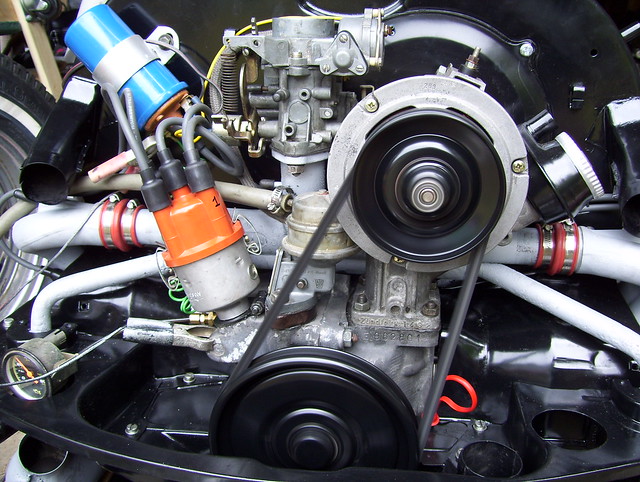I thought I'd throw out this not-so-common idea. Anyone familiar with the classic VW Beetle knows that the early Bugs (cerca 1940's and 50's) got as much as 35mpg stock without any modification. But by the 70's the fuel mileage dropped down to around 25mpg. But it went back up again in the 90's back to around 35mpg again.
How did they do it?
The early Bugs had little 1100CC engines that produced 25hp, followed by 1200cc "36hp", 1200cc "40hp", 1300cc, 1500cc and finally a 1600cc engine. These were all called single port engines, and were known for their better low end torque and fuel mileage when compared to the later dual port engines. The dual ports also came in 1300cc and 1600cc sizes, so how did the single ports get better fuel mileage?
Well, there's an interesting theory. These engines have a strange intake manifold that starts with a center carburetor feeding into a tee that goes from end to end of the engine. So one long runner feeds the 1/2 head and another the 3/4 head. Timing is 1-4-3-2 so the #2 and #4 cylinders basically start the flow through their ends of the intake tube and the #1 and #3 finish it. This disproportionate intake causes two cylinders to fill a lot more than the other two, basically turning the 4 cylinder engine into a 2 cylinder at highway speeds (also it "super charges" two cylinders at low RPM giving the engine it's low end torque characteristic.)
When VW began looking for better emissions it became apparent that more even cylinder filling would make it easier to control. So they made the dual port engine, which put the split on each end closer to the carb. Fuel mileage and low end torque dropped as a result.
Interestingly, however, by the 1990's VW went even further and made an even intake runner manifold with fuel injection for this same engine. Sold until 1993 in Mexico, this engine ended up getting the best fuel mileage any of the classic Bugs ever had.


